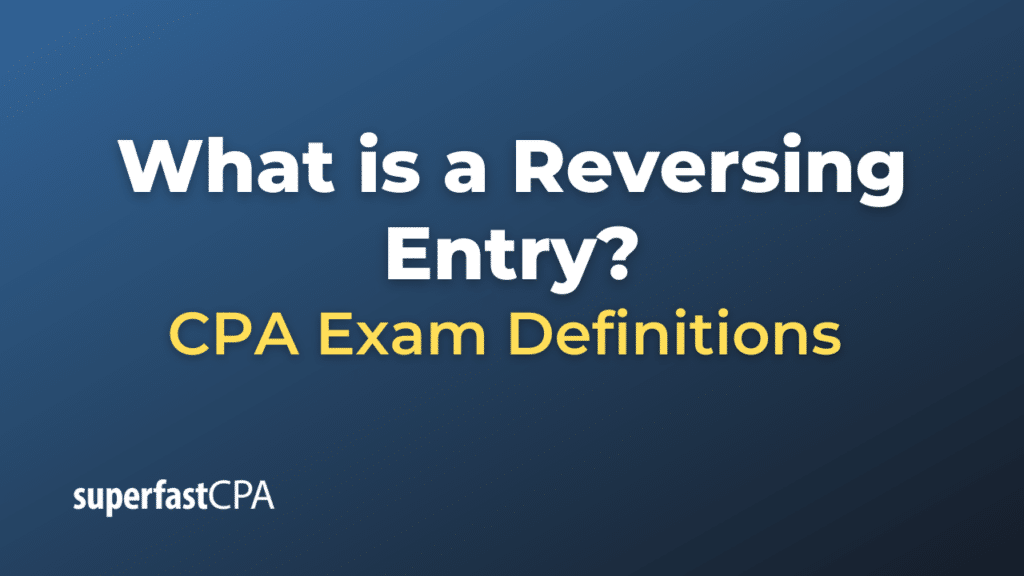Reversing Entry
A reversing entry is an accounting procedure used at the beginning of a reporting period to reverse certain journal entries made in the previous period. It is used to counteract the effects of some adjustments that were made in the previous reporting period, ensuring that transactions are only recorded once in the financial statements.
Reversing entries are primarily used in accrual accounting to ensure that certain expenses and revenues are recognized in the period in which they are incurred or earned, regardless of when the payment is made or received.
Here’s a breakdown of why and when reversing entries are used:
- Accrual Adjustments: When an expense or revenue is recognized before the payment is made or received, an accrual adjusting entry is recorded. For instance, if salaries for December are paid in January, an accrual will recognize the expense in December, even though the cash is paid in January.
- Reversing the Accrual: At the beginning of the next period (in this case, January), a reversing entry would be made to negate the previous accrual. This ensures that when the actual payment is made later in January, the expense isn’t recorded twice.
Example of a Reversing Entry
XYZ Company has a note receivable that earns $2,000 of interest every month. The interest is due and collected from the debtor on the 10th of the following month. Let’s say December’s interest hasn’t been collected by December 31, which is the end of XYZ Company’s accounting period.
Adjusting Entry at December 31:
At the end of December, XYZ Company would make an adjusting entry to recognize the interest revenue they’ve earned but not yet received. This is an accrual:
Date Account Title Debit Credit
December 31 Interest Receivable $2,000
Interest Revenue $2,000Reversing Entry on January 1:
On January 1st, XYZ Company can make a reversing entry to negate the accrual they made in December:
Date Account Title Debit Credit
January 1 Interest Revenue $2,000
Interest Receivable $2,000Collection Entry on January 10:
When XYZ Company collects the interest on January 10, they would record the actual receipt of cash:
Date Account Title Debit Credit
January 10 Cash $2,000
Interest Revenue $2,000With the reversing entry, the January 10 entry credits the interest revenue directly. Without the reversing entry, the credit on January 10 would be to the Interest Receivable account instead of the Interest Revenue account.
By using the reversing entry, XYZ Company ensures that:
- The revenue is recognized in December when it was earned.
- The receipt of cash in January is straightforward and credits the revenue account directly, without needing to adjust the receivable account again.
Again, reversing entries are optional, and businesses use them based on their preferences and the specific nuances of their accounting processes.













